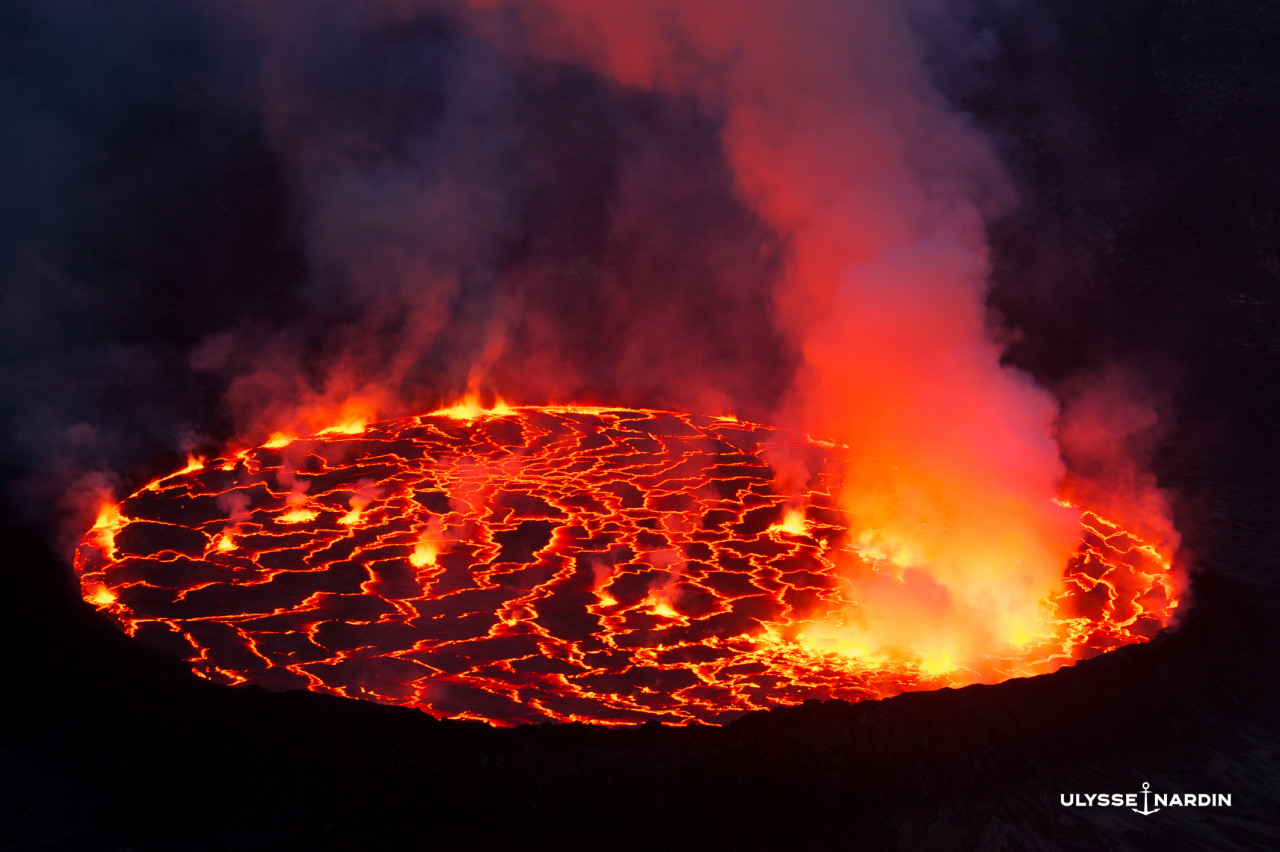Iceland by Carsten Peter: photographer of "the extreme"

Peter Carsten, photographer and Ulyse Nardin ambassador has given us his vision of Iceland. He describes its volcanic relief, echoing the topical issue surrounding the Grímsvötn volcano – which has been asleep since 2011 and is slowly waking up.
"The rugged terrain of Iceland appears before me as my plane lands at Keflavik Airport in Iceland. Iceland has an almost lunar landscape (the US actually used Iceland for astronaut training because of the similarity). It feels like landing on another planet.
Vast fields of craggy red and black lava rock, yellow orange and green moss are everywhere. Far off in the distance, dark and looming mountains with high clouds well above, great white glaciers and deep fjords cutting all the way down to the sea.
The volcanic topography with its mountains that jut out of the earth like Viking daggers is a magnificent and dangerous place known as the “Land of Ice and Fire” for the contrast between the high level of volcanic activity and the extensive glaciers. The sky is a leaden grey, the green sea churning over the coast in timeless, aquatic unrest. These are the dangerous lands that the Icelanders left ten centuries ago in their longboats to raid and pillage foreign lands. I have come here on my own “raid”; to photograph Iceland’s ever changing surface and its active volcanoes.
A giant force separates here the Eurasian and North American tectonic plates and creates new land at the “Icelandic hotspot”. It is a fascinating place and unlike any other I have ever seen in the world. I am fascinated by is geological life; in 2010 the eruption of Eyjafjallajökull hurled ash and lava 20 km into the atmosphere, halting all air traffic. Not to speak about historic eruptions like Laki in 1783/1784, one of the biggest eruptions the last 2000 years. The temperature dropped in the whole Northern Hemisphere for 1,5°C and poisonous gases affected Europe. Once in Iceland you can look into the ridge that separates the plates and throw a stone from Europe to North America.
It may be an ancient swath of sub-arctic land, but it is still growing thanks to its continuing volcanic activity. The second largest island in Europe, after Great Britain (the largest) and before Ireland (third largest), the latest addition to Iceland was Surtsey, in the Vestmannaeyjar (“the Westman Islands,” so named for two Westmen–Irishmen–slaves who escaped from the original Norse settlers and were found on the islands). Surtsey was born from the sea and the fire over the course of four years between 1963 and 1967. It was named for a fire-giant, or Jötunn, from Norse mythology, and has been scientifically important as it has given researchers a chance to actually watch the formation of new land and its subsequent colonization by animal and plant species."
Biography
I am a German photographer, filmmaker, biologist, adventurer, and World Press Award winner, constantly searching for the “extremes of nature”. I was born in Munich, Germany in 1958, and through the years became a technical climber, paraglider, caver, diver, and cannoneer. I specialize in going to extremes: from scuba diving in a glacier on Mont Blanc, to crossing the Sahara on a camel, to caving in Borneo – nothing can keep me from a photographic adventure. I am always living on the edge with my camera, searching for places where nature is still pure and where my survival will depend on my wits and my skills.
I am enthusiastically obsessed with devising innovative photographic techniques to capture never-before-seen images from some of the scariest environments on the planet. My many adventures include braving toxic caverns and acid waterfalls to shoot photographs within the deepest ice shafts on earth, rappelling into active volcanoes with turbulent lava lakes and superheated thermal caves, and breaking altitude records while flying my motorized paraglider.
CARSTEN PETER & ULYSSE NARDIN
Partnered w/ Ulysse Nardin on FREAK X ICE and FREAK X MAGMA as the “new Ulysse of the Xtreme” Carsten is on an Odyssey to some the most dangerous places on the planet, including Iceland. The beautiful coastal landscapes, excellent wind conditions, and its biodiversity make it an excellent sailing destination. Its remoteness, the rocky coasts, shallow waters, and tidal conditions make Iceland more suitable for experienced sailors, as the weather can change quickly and dramatically. He is ready with his camera; his inner fortitude and his innate sense of curiosity to conquer these mysterious, majestic landscapes.
Teams info
After a stunning 2025 season Sam Goodchild is the IMOCA Globe Series Champion for the second time
After a long season at the top of the IMOCA fleet that featured three race wins, Great Britain’s Sam Goodchild is for the second time in three years the IMOCA Globe Series Champion.
•••Quel rôle peut jouer la course au large dans la transformation du transport international ? Avec Pie…
Pour ce 10ᵉ épisode de Transitions, enregistré au Havre lors du départ de la Transat Café L'Or, nous recevons Jeremy Pochman, PDG de 11th Hour Racing, et Pierre-Antoine Morvan, responsable du pôle course au large et supe…
•••